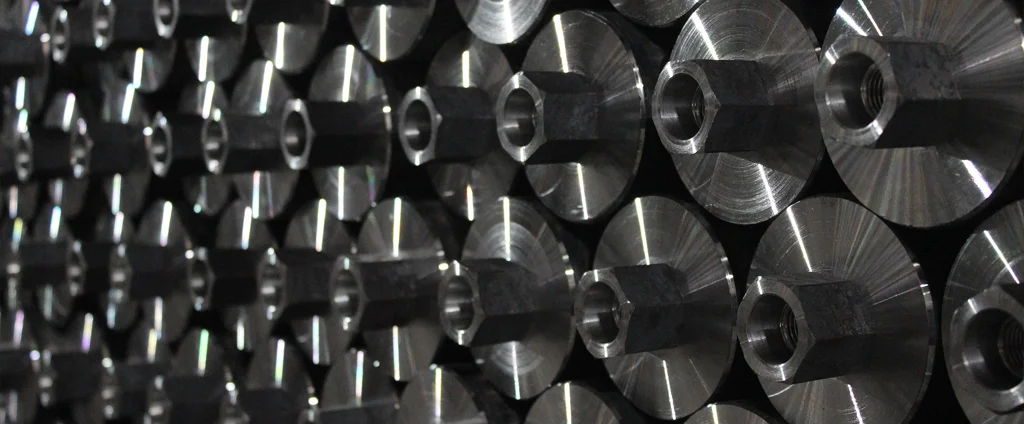SAE/AISI 1060 Carbon Steel (UNS G10600)

SAE/AISI 1060 carbon steel is a medium-high carbon alloy known for its excellent strength, hardness, and wear resistance. Commonly used in demanding applications such as knives, blades, and hand tools, this steel offers a reliable balance of toughness and machinability, making it ideal for environments where durability and performance are essential.
| Chemical Composition | ||
|---|---|---|
| Element | Min | Max |
| Iron | 98.35% | 98.85% |
| Carbon | 0.55% | 0.66% |
| Manganese | 0.60% | 0.90% |
| Phosphorous | —— | 0.04% |
| Sulfur | —— | 0.05% |
The following table provides a list of SAE/AISI 1060 properties in both SI and US customary/Imperial units.
Click on the button to switch between Metric and Imperial units.
| Physical Properties | Metric |
|---|---|
| Density | 7850 kg/m3 |
| Mechanical Properties | Metric |
| Tensile Strength (Ultimate) | 620 MPa |
| Tensile Strength (Yield) | 485 MPa |
| Young’s Modulus (E) | 190 - 210 GPa |
| Bulk Modulus (K) | 140 GPa |
| Shear Modulus (G) | 80 GPa |
| Elongation at Break | 10% |
| Poisson’s Ratio (ν) | 0.27 - 0.30 |
| Brinell Hardness | 183 |
| Thermal Properties | Metric |
| Thermal Conductivity | 50 W/m·K |
| Specific Heat Capacity (Cp) | 470 J/kg·K |
| Coefficient of Thermal Expansion (αL) | 1.1×10-5 1/°C |
| Electrical Properties | Metric |
| Electrical Conductivity | 5.57×106 S/m |
| Electrical Resistivity | 1.8×10-7 Ω·m |
The values in this table are approximate and can vary depending on various factors such as the specific manufacturing process and heat treatment applied to the alloy.
Advantages & Disadvantages of 1060 Carbon Steel
| Advantages | Disadvantages |
|---|---|
| High strength | Low toughness |
| Excellent wear resistance | Susceptible to corrosion |
| Cost-effective | Limited flexibility |
Applications of 1060 Carbon Steel
1060 carbon steel is widely employed in industries that demand strength, wear resistance, and durability, including:
- Blades and Knives: Widely used in the production of blades, knives, and cutting tools. Its high carbon content and excellent edge retention make it suitable for creating sharp and durable cutting edges.
- Hand Tools: Due to its strength, toughness, and wear resistance, it is utilized in the manufacturing of hand tools such as hammers, chisels, punches, and wrenches. These tools require robust materials that can withstand heavy use and provide reliable performance.
- Springs: Springs in various applications benefit from its high tensile strength and resilience. It is commonly used in the production of coil springs, flat springs, and other types of mechanical springs that require strength and durability.
- Automotive Components: Certain automotive components, including leaf springs, coil springs, and suspension parts, can be made from this material. Its mechanical properties make it suitable for applications where strength, toughness, and resistance to fatigue are essential.
- Swords and Weapons: Has a long history of being used in the production of swords and other traditional weapons. Its combination of strength, hardness, and edge retention makes it suitable for forging blades with good cutting performance.
- Agricultural Tools: Implements used in farming and agriculture, such as sickles, scythes, and hoes, can be made from this steel. Its wear resistance and toughness make it well-suited for withstanding the demands of agricultural work.
- Industrial Machinery Parts: Various industrial machinery parts, such as gears, shafts, and connecting rods, can be manufactured using this steel. Its strength and durability contribute to the reliable operation of machinery under heavy loads and harsh conditions.
- Construction Tools: Construction tools like trowels, plastering floats, and concrete finishing tools can be made from it. Its toughness and wear resistance allow these tools to endure the rigors of construction work.
